WooCommerce review
WooCommerce is one of the most popular online store builders, and it’s a powerful plugin backed by versatile ecommerce tools
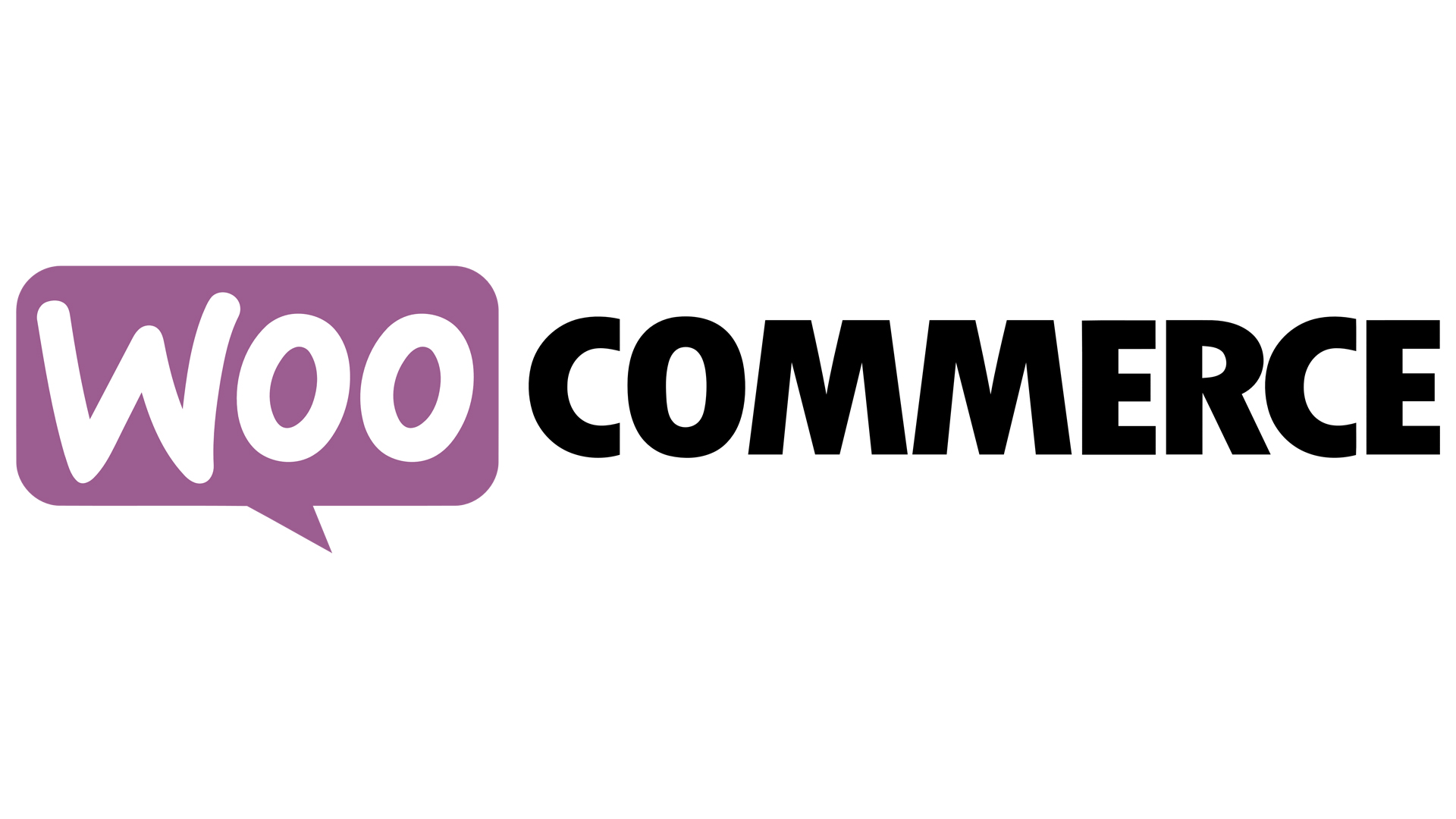
WooCommerce is an ecommerce plugin designed to be used with WordPress.org, and it’s clearly one of the best online store builders we’ve used.
-
+
Extremely versatile store builder with full code access
-
+
Can be used with WordPress’s thousands of templates
-
+
Backed by numerous add-ons and extensions
-
-
A little confusing to get started with
-
-
Does require a small amount of technical know-how

Although not among the rankings to find the best website builder (because it’s not technically a website builder on its own), WooCommerce presents one of the leading ecommerce store creation options. In our WooCommerce review, you will see why this leading WordPress website builder plugin for building an online store has become one of the most widely-used ecommerce platforms in the world.
WooCommerce review: Snapshot
When used with WordPress, WooCommerce represents one of the most powerful options for building an online store in the world. It’s extremely popular, and favored by many because of the flexibility and design freedom that it brings to the table. Even the base version is packed full of advanced inventory management, marketing, order management, and various other tools.
On top of this, you can add all sorts of new tools through the native Extensions Store. Customer service is a little limited, and the sheer number of features can make getting started a little complex, but this platform is a great option for small and large stores alike.
WooCommerce is a little harder to get the hang of than competitors such as Squarespace and Shopify, but it’s much more powerful. If you’re looking for ease of use, an all-in-one store builder could be a better option. But if power and versatility is your priority, WooCommerce is right up there with the best.
Score: 4.5/5
Read on for our full WooCommerce review.
WooCommerce’s competitors
How does WooCommerce compare to its main competitors?
| Header Cell - Column 0 | WooCommerce | Shopify | Squarespace |
|---|---|---|---|
| Score | 4.5/5 | 4.5/5 | 4/5 |
| Pros | - Extremely versatile store builder with full code access- Can be used with WordPress’s thousands of templates- Backed by numerous add-ons and extensions | - Loads of third-party apps and extensions- One of the best options for beginners- Advanced analytics and reporting tools | - Attractive, professionally designed templates- Streamlined integrations with various marketing tools- Advanced blogging tools |
| Cons | - A little confusing to get started with- Does require a small amount of technical know-how | - Can be quite expensive- A little over-the-top for basic stores | - Poor option for larger websites- Performance can be an issue |
| Verdict | WooCommerce is an ecommerce plugin designed to be used with WordPress.org, and it’s clearly one of the best online store builders we’ve used. | Shopify is the world’s most popular online store builder, and it offers excellent ecommerce solutions targeted at beginners. | Squarespace offers advanced website building solutions with a focus on professional designs and simple ecommerce. |
| View deals | Visit site | Visit site | Visit site |
WooCommerce: Key features
WooCommerce is one of the most feature-rich ecommerce website builders we’ve used. When you add it to your WordPress website, it enables you to add an online store to your existing site, the functionality to accept payments, the ability to track inventory, and more. We’ve touched on a few of the most noteworthy features here, but understand that this is far from an exhaustive list.
One of the things that stands out is WooCommerce’s excellent Extensions Store. Here, you will find a large number of free and premium extensions that you can use to add virtually any functionality to your store. There are various extension collections designed for specific types of stores, making it easy to find what you need.

Some extensions are designed to help you manage your business and connect to third-party platforms, while others are made to help you boost sales and improve business success.
Speaking of success, WooCommerce makes it easier than ever to create a highly customised, successful store. Its software is open-source, which means that you can edit its code as required to obtain the exact look and performance you require.
WooCommerce also enables you to accept payments through numerous third-party payment gateways, as well as through the native WooCommerce Payments interface. You can add PayPal, Stripe, Square, Apple Pay, Google Pay, and various other options. All up, more than 140 different payment gateways are supported in different parts of the world.
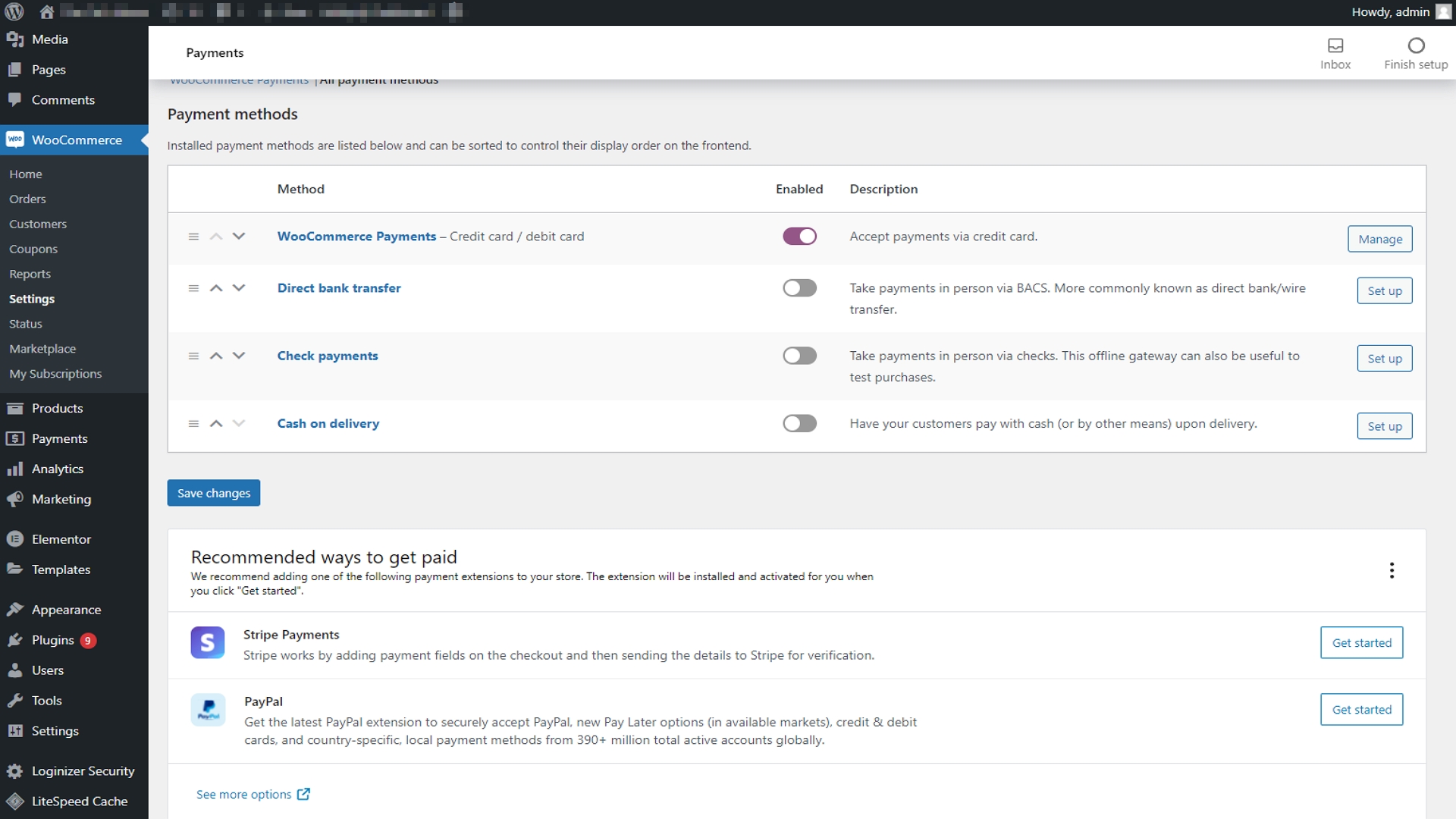
Those starting a new store from scratch will love WooCommerce’s native Storefront theme. The base (parent) theme is designed specifically for WordPress and WooCommerce stores, and it was built to help you develop a high-converting, aesthetically-pleasing website.
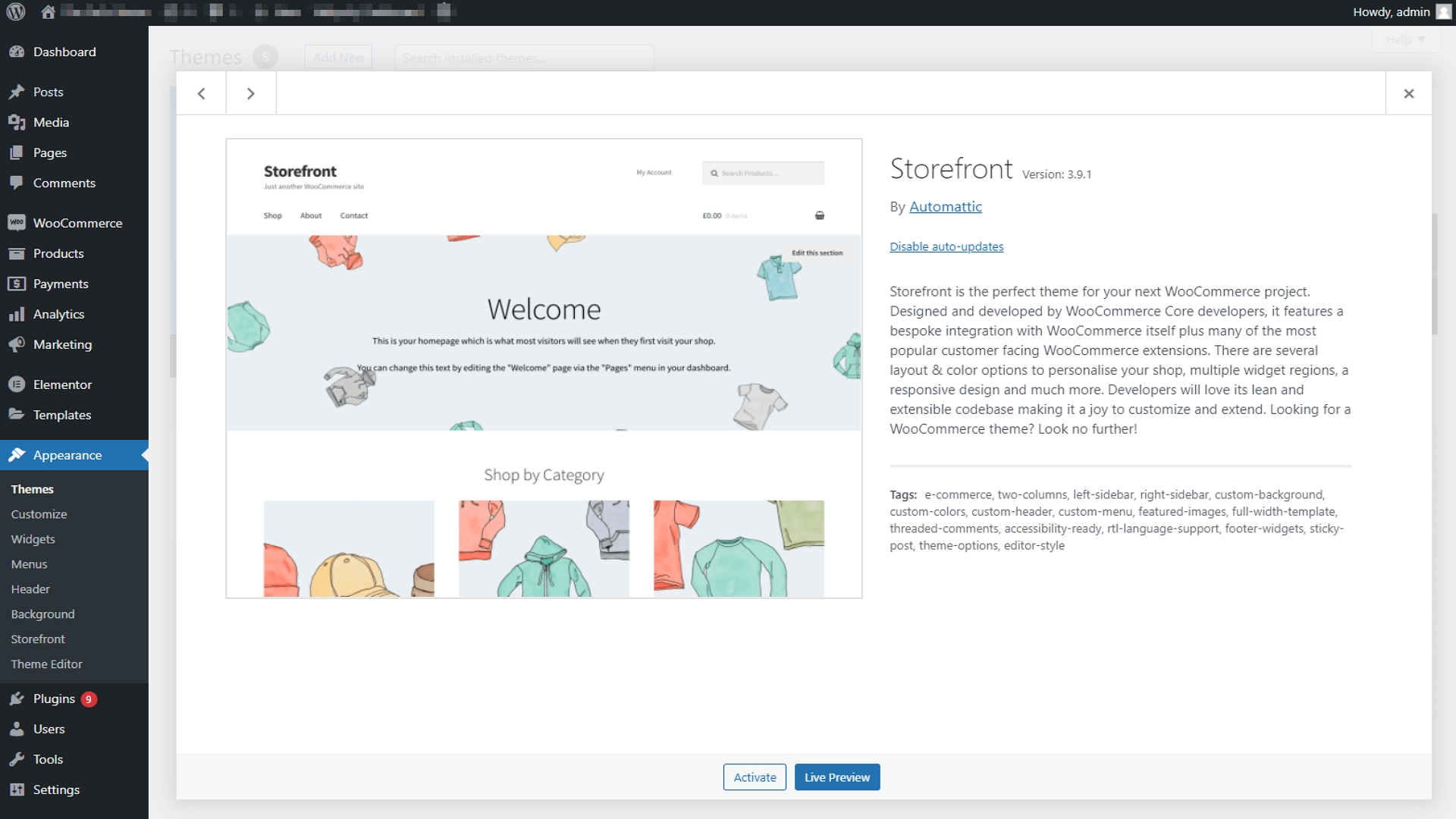
What’s more, the base version is 100% free, although there are numerous premium add-ons and child themes—more specialised designs built on the base theme—available for purchase.
Last, but not least, WooCommerce is available in mobile app form for both iOS and Android devices. This basically enables you to manage your store on the go, adding and editing products, fulfilling orders, printing shipping labels, and tracking key statistics and other important store metrics.
WooCommerce: What’s new in 2022?
WooCommerce is regularly updated, and product releases are listed on the company website. One recent minor release (WooCommerce 5.9) was on 9th November, 2021. It mostly contained bug fixes and simple updates, but it also added a redesigned WooCommerce marketplace, a new version of the WooCommerce Admin package, and a new version of WooCommerce Blocks.
The previous version, WooCommerce 5.8, was released less than a month earlier. The main takeaway here is that the WooCommerce team and community are extremely active, and you can expect regular product updates into the future.
WooCommerce: Pricing
The base WooCommerce software is an open-source program that’s free, forever. You can download it from the WordPress plugin library and install it on your website with the click of a button. Premium extensions and themes are available, and these can range from a few to hundreds of pounds a year.
However, there are a few costs associated with using WooCommerce. At the most basic level, you will need to pay a few dollars a month for hosting, and a few dollars a year for a domain name. If you want to build a large website, your hosting prices will increase.
You may also have to pay for professional help when creating your website, and transaction fees apply with virtually all payment gateways, including WooCommerce Payments.
WooCommerce’s plan
| Plan type/feature | WooCommerce |
|---|---|
| Cost per month | Free |
| Cost per year | Free |
| Code editing | ✔ |
| Mobile app | ✔ |
| Plugins/extensions | ✔ (thousands) |
| Full store and data ownership | ✔ |
Testing WooCommerce
To test WooCommerce, we opened a simple shared hosting account with Namecheap, installed WordPress, and installed the WooCommerce plugin. We then created a new store, exploring the different customisation and management options.
Is it hard to open a new WooCommerce store?
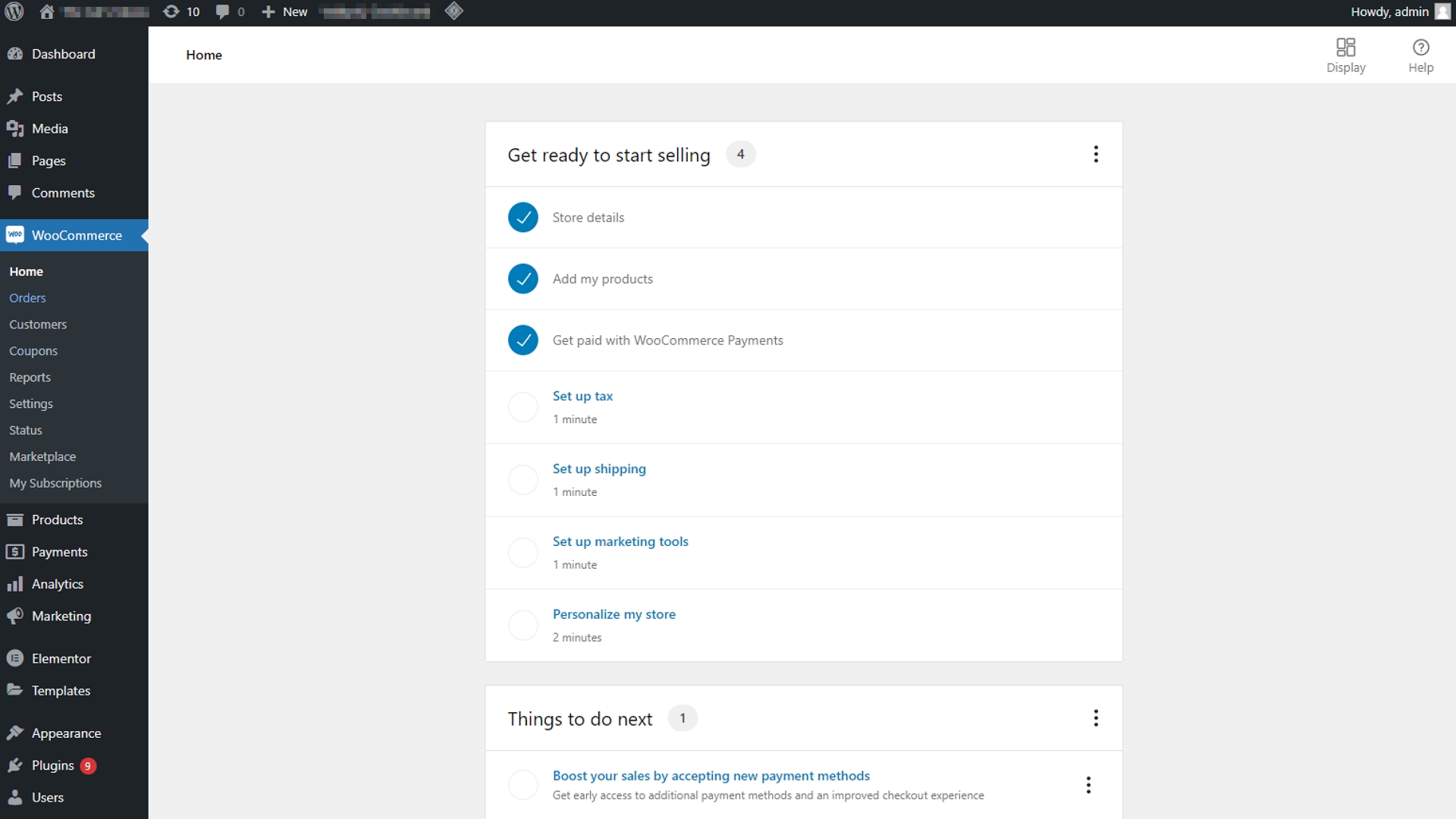
Getting started with WooCommerce can take some time, especially if you lack web development skills and knowledge. To begin, you will need to sign up for a web hosting account, and purchase a domain name. Some of the best web hosting providers, like Hostinger and Hostwinds, are good options for this.
Next, you will need to install WordPress to your hosting account. Most hosts offer one-click installation, which is very straightforward. In some cases, you will even benefit from one-click WooCommerce installation.
But if not, you can simply download the WooCommerce plugin from the WordPress plugin library. The base plugin is free, although some of the more specialised extensions can get a little expensive.
The WooCommerce plugin will guide you through a number of setup steps when you install it for the first time, and you should have the skeleton of your store up and running in no time at all.
It’s worth noting, too, that almost all WordPress themes are compatible with the WooCommerce plugin, which makes it extremely easy to add ecommerce to your site.
How do you add products to your WooCommerce store?
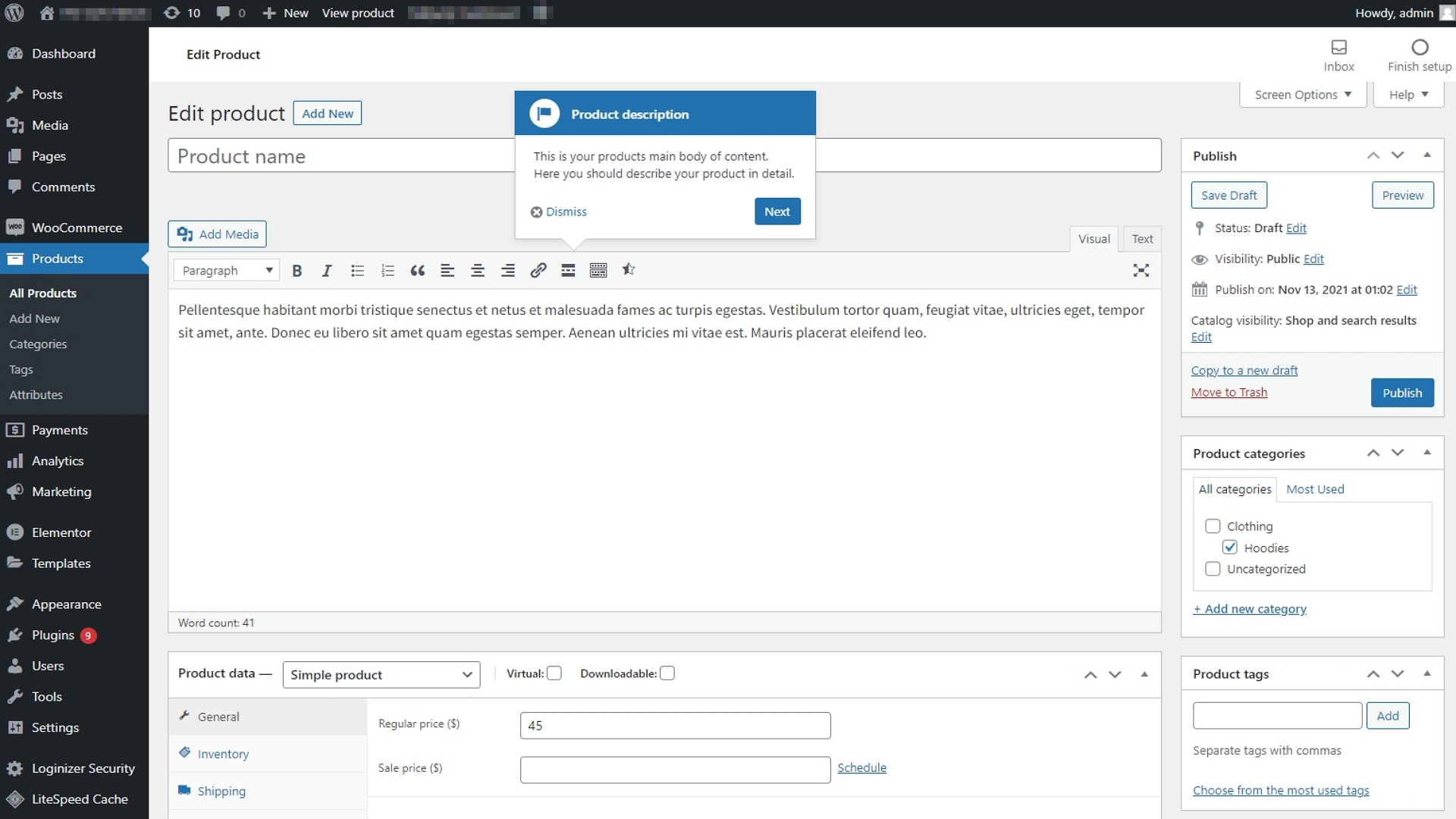
When you install WooCommerce, a products tab will appear on the menu on the left of your WordPress dashboard. There are several options for adding new products.
For one, simply select the "Add New" option, and fill in the product information manually. This is good for small stores, or those with a small number of products and variations. Here, you can add a product description, image, tags, and category. You can also specify many settings relating to shipping, inventory, appearance, and more.
Alternatively, you can add products in bulk by uploading a csv file, or use a third-party dropshipping plugin to automatically add items to your store. Regardless of the method you select, the process is straightforward, and you will have a lot of flexibility.
Alternatives to WooCommerce
WooCommerce is the most popular WordPress ecommerce plugins, but it’s far from the only option to consider when you want to open a new online store.
Shopify, for example, is the world’s most popular store builder. It offers all-in-one ecommerce solutions that include hosting, a store editor, and a large range of online selling tools. It is quite expensive, with prices starting from £19 a month, but the value for money here is excellent.
One thing that stands out about Shopify is its focus on beginners. Where WooCommerce can be a little confusing to get started with, Shopify really focuses on ease of use, accessibility, and bringing ecommerce to those with few tech skills.
Another popular option for online store creation is Squarespace. It’s known for its professional templates and advanced native website building tools, but it’s certainly not as powerful as WooCommerce or Shopify. However, it remains a great option for those who want to build a small, simple store.
For example, Squarespace’s store editor enables advanced customisation without the need for any special design or development skills. Its prices start at £13 a month (£10 with annual payments), making it one of the most competitively priced ecommerce options on the market.
WooCommerce’s features compared to the competition
| Header Cell - Column 0 | WooCommerce | Shopify | Squarespace |
|---|---|---|---|
| Themes | Thousands through WordPresstheme library and third-party libraries | 81 native themes (can upload customthemes as well) | ~60 |
| Plugins/extensions | Thousands | Thousands | 28 |
| Support | Email, live chat in specific situations | Email, live chat, scheduled phone callbacks | Email, business-hours live chat |
| Basic plan | Free forever | £19 a month | £13 a month |
WooCommerce: Final verdict
WooCommerce clearly sits in elite company among the few top ecommerce platforms in the world. It’s used in combination with WordPress.org, the world’s most popular CMS, and is designed for those who want to create a highly personalised online store.
One of the best things about WooCommerce is the versatility and design flexibility on offer. It’s an open-source program, and you can edit the code as much or as little as required to achieve the look and feel you want. There are also numerous extensions available for purchase if you want to add more functionality to your store.
Other standout features include the neat mobile app, the free Storefront theme, and the huge number of supported payment gateways. All editing and management is done through the WordPress.org admin dashboard, and WooCommerce can even be used with other third-party plugins such as the Elementor page builder.
On the downside, customer service is quite limited. It can be quite difficult and confusing to get started if you’ve never used WordPress before, and the platform’s open-source nature can make it difficult to get help.
Overall, though, we’d highly recommend testing WooCommerce if you want to create a new online store. It’s a great option for everything from simple single-product stores to large warehouses and international stores, and you won’t be disappointed.
Further reading on website builders
If you want to find out more about alternatives to WooCommerce, take a look at our guide to the best small business website builders, the best ecommerce website builders, and the best free website builders. If you're considering the best WordPress hosting for your WordPress site, make sure to look at our listicles outlining seven great reasons to choose managed WordPress hosting, and the four S's of managed WordPress: security, scalability, speed, and service.
Get the ITPro daily newsletter
Sign up today and you will receive a free copy of our Future Focus 2025 report - the leading guidance on AI, cybersecurity and other IT challenges as per 700+ senior executives
Daniel is a freelance technology and finance writer, whose scientific background in the natural sciences lends rigour and nuance to his informative, accessible articles. His reviews on website builders, web hosting and business web development grace the virtual pages of TechRadar Pro, WebsiteHostingRating.com, and HostingReview.com, as well as IT Pro Portal. Well-versed in blockchain, cloud computing and cybersecurity, Daniel takes a keen interest in all aspects of B2B and B2C tech.
-
 Third time lucky? Microsoft finally begins roll-out of controversial Recall feature
Third time lucky? Microsoft finally begins roll-out of controversial Recall featureNews The Windows Recall feature has been plagued by setbacks and backlash from security professionals
By Emma Woollacott Published
-
 The UK government wants quantum technology out of the lab and in the hands of enterprises
The UK government wants quantum technology out of the lab and in the hands of enterprisesNews The UK government has unveiled plans to invest £121 million in quantum computing projects in an effort to drive real-world applications and adoption rates.
By Emma Woollacott Published
-
 Businesses are taking their eye off the ball with vulnerability patching
Businesses are taking their eye off the ball with vulnerability patchingNews Security leaders are overconfident in their organization’s security posture while allowing vulnerability patching to fall by the wayside.
By Jane McCallion Published